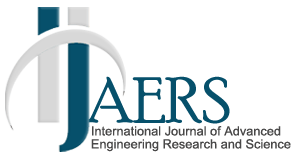A Seismic Channel Model: The San Ramon Fault |
| ( Vol-3,Issue-11,November 2016 ) OPEN ACCESS |
| Author(s): |
Hector Torres-Silva, Diego Torres Cabezas |
| Keywords: |
|
chirality, S waves, San Ramon Fault, earthquake, soliton. |
| Abstract: |
|
Although seismic waves have been studied for many years, their soliton structure has only recently studied. Deformation solitons propagate along earthquake faults and can induce large earthquakes. Rotation solitons are generated in earthquake sources and propagate throughout the Earth. The conclusion to be reached from our paper is that the research on seismic solitons is essential for investigating the propagation of seismic waves and helps understand mechanisms triggering earthquakes. This paper discusses the development of elastodynamics equations similar to Maxwell's equations in a chiral -mode which is applied to a seismic channel, which is dispersive and nonlinear. The chirality is described in terms of the formalism proposed by Born-Fedorov. The nonlinearity is Kerr-type, and dispersion of the medium is taken into account explicitly through the Taylor series expansion. Through numerical calculations these theoretical results allow us analyze the soliton propagation of S-seismic pulses which can induce strong earthquakes. The numerical calculation is applied to the San Ramon Fault localized in Santiago City, Chile which is a seismically active fault that is a main element to be considered in any study on seismic hazard assessment for this city. |
|
|
| Paper Statistics: |
| Cite this Article: |
| Click here to get all Styles of Citation using DOI of the article. |
- Track Your Paper
- editor.ijaers@gmail.com
- ISSN : 2349-6495(P) | 2456-1908(O)



Advanced Engineering Research and Science